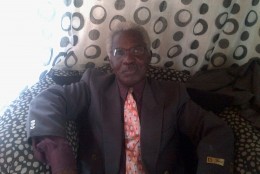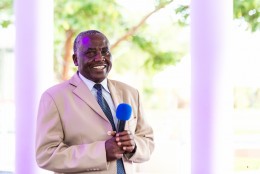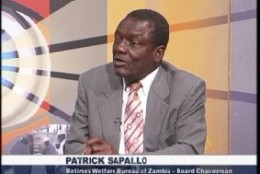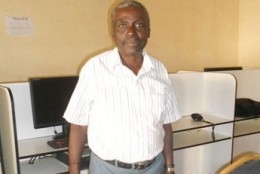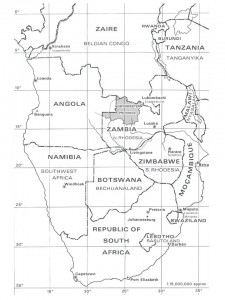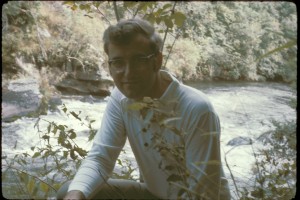Website Overview: NWP & David
First time users should start by watching this video
The above website overview video was made in 2016. Two corrections: a) Zambia now has ten provinces, not nine and
(b) “Zaire” is now called the “Democratic Republic of Congo (DRC).”
==================================================================================
The “NWP of Zambia” stands for the NorthWestern Province of Zambia. “David” is Paul David Wilkin. As the video explains, this website is about the interaction between the NWP and David. Although I (David) only lived in the NWP from 1963-1979, the website actually spans the years 1907-2011, as explained below. Since “no man is an island,” this story also includes many friends connected to the NWP. They include: Patrick Sapallo (deceased), Thomas Samungole (deceased), James Kanga (deceased), Stanley Kamboyi and Pascal Bwalya Ndakala: all either born in the NWP or lived there for many years; all have given valuable advice. All of us, once young in the 1960s, are now clearly much older! (The upper left photo is David in 1962 for comparison!) Click on the direct links to the following webpages for more pictures and acknowledgements:
- David in 1962 in Cleveland
- Bwalya & David, NYC, 2014
- Thomas Samungole, Lusaka, 2014
- James Kanga, son’s wedding, 2015
- Patrick Sapallo, Lusaka, 2015
- Stanley Kamboyi, Mumbwa, 2015
David’s personal statement about the NWP from 1963 to 1979. I feel fortunate to have lived in this large, remote and very rural area of Zambia during two remarkable decades when Zambia became a new nation. These were the most challenging and creative years of my life. I resided in three different corners of the province for about 15 years of these two decades: Solwezi, Zambezi and Mwinilunga. It is a special blessing that I have been able to keep in continuous touch with so many numerous friends and family therefrom for over 50 years.
The website’s major purpose is to make information about the NWP more available worldwide. This remote region of English-speaking Africa is far too interesting (and increasingly too important) to be left so unknown and so isolated in our modern world!
This website has two major divisions — non-academic and academic:
Non-academic. The first half, “David’s Story with Photographs” has eight sub-pages that survey the province and nation through David’s eyes, along with those of his friends. It narrates the story of his personal life and makes personal observations over more than two decades: 1963-1999. (The last webpage “African Travels: 1996-2012” looks beyond the NWP to David’s travels throughout southern Africa.) Direct link: David’s Story
This first part of the website should appeal to David’s friends and relatives worldwide and all others simply interested in learning more about the NWP. More specifically, it is intended for people from the NWP who live within its provincial boundaries today or who have migrated either internally to other parts of Zambia or externally to other places in the world. Men who were secondary school students at Solwezi from 1963-1965 and Balovale (now Zambezi) from 1965-1968 will be the most interested of all, especially to see the old photographs!
Academic Writings and Sources. This half of the website contains both David’s academic writings and his scholarly sources. These historical materials cover an earlier period from 1906 to 1945, with some documents also spanning 1945-1964. This webpage includes David’s e-book, which may be revised in several years. These pages also includes a link to David’s old dissertation. Two sub-pages include pdf copies of archival documents and then interviews. The interview page includes many actual audio recordings of now largely deceased participants. These interviews allow them to speak from beyond the grave to their descendants and scholars.
A Special Note: As websites are very fragile(!), scholars should be aware that the physical documents for these two sub-pages with archival documents and interviews have been deposited in Syracuse University’s Special Collections Research Center in New York. Check this link to see what has been deposited for scholarly use in their well kept collection: Research Documents and Interviews at Syracuse
Direct links:
This academic portion of the website is clearly intended for scholars worldwide, who are professionally interested in Zambia and this area of southern/central Africa. They may freely use anything without authorization and will hopefully find the historical narratives and/or pdf documents useful for their research. Although all documents and writings are scholarly, anyone with a good basic education can read most of them. High school, college students, as well as graduate students, worldwide and especially in Zambia, are encouraged to use these materials for reports, etc.
The NWP itself. (To enlarge the NWP map below, simply click on it.) Note that the NorthWestern Province is also spelled as two words: North Western or with a hyphen: North-Western. (Google searches generally change NorthWestern to North Western.) This large, remote, and largely rural area of Zambia borders Angola on the west and the Democratic Republic of Congo (or Congo DR and formerly called “Zaire”) on the north. One of Zambia’s ten provinces, it covers an area slightly smaller than England or slightly larger than Ohio. The 2010 census shows the province’s population has only 752,612 people. This makes it Zambia’s most sparsely populated as it has been in the past. Solwezi is the provincial capital. As with all of Zambia, the province has remained relatively calm and without major strife unlike many neighboring countries around it.
Historical Map of Zambia and Southern African (NWP highlighted)
Created in 1983 by Syracuse University cartographers
(Click to enlarge)
An economically “rocky” time. Although politically stable, most of the first 50 years of Zambia’s independence have been economically difficult, both for the country and especially this rural northwestern corner. In 1963, relatively little was known about this province and unfortunately the same remains true. It was called Zambia’s “Cinderella province” in 1963 and for at least five decades thereafter. This economic situation, however, seems is changing with the spread of copper mining to many areas of the province.
==================================================================================
The picture below is an old favorite that was taken at the Solwezi gorge near Solwezi town sometime between 1963 and 1965. This gorge contains old “bushman” paintings in caves along the river. Some are becoming damaged both by time and by human hands.
PLEASE NOTE: The website will remain a work in progress for the indefinite future, but there is no intention to make many changes after the end of 2021.




